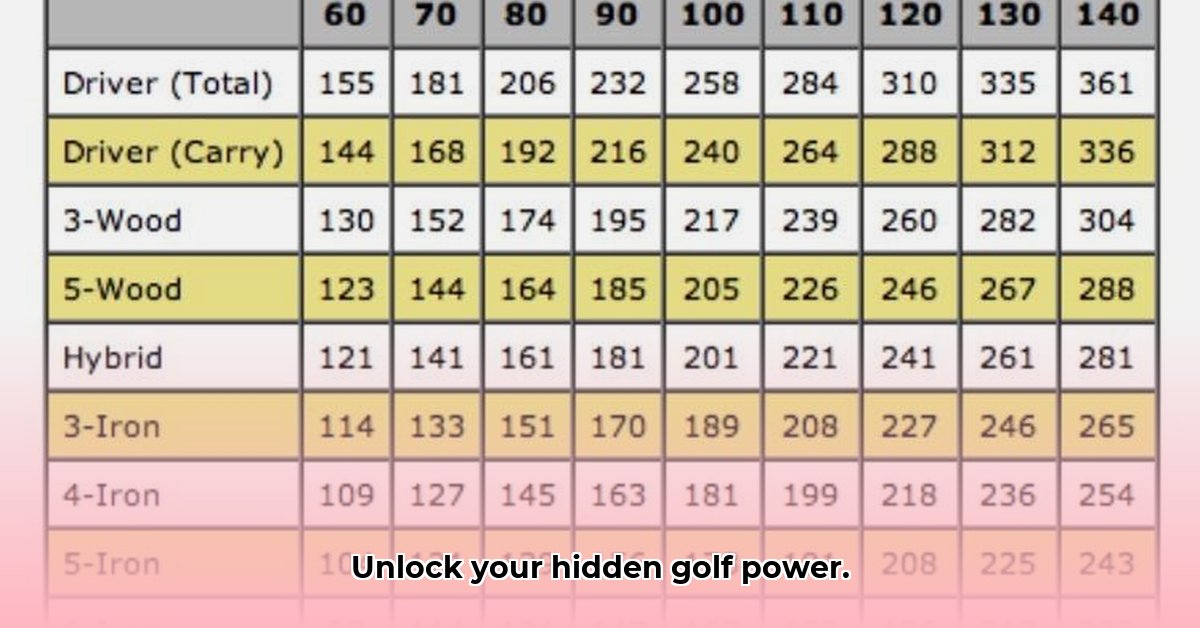Have you ever wondered why some golf shots reach soaring heights while others barely leave the ground? The secret often lies in understanding the “loft” of your golf clubs—that’s the angle of the clubface. A steeper angle (more loft) means the ball goes higher, but may not travel as far. A shallower angle (less loft) means a lower, potentially longer shot. In this instructional guide, we’re going to break down everything you need to know about golf club lofts, from comparing different brands to choosing the perfect clubs for your game. You’ll understand how the angle of your club affects your shots, helping you hit the ball exactly where you want it to go.
Unlocking Your Golfing Potential: The Power of Loft Charts
Understanding your golf club loft chart is like having a secret weapon on the course, providing a strategic advantage that can significantly improve your game. It’s not just about deciphering numbers; it’s about grasping how the angle of your club influences your shots, empowering you to hit the ball precisely where you intend.
Loft: The Unsung Hero and Game Changer
Loft, at its core, is the angle formed between the clubface and the shaft. This seemingly minor detail drastically changes how your ball travels through the air. A higher-lofted club, like a wedge, sends the ball high in the air, but not very far—perfect for those delicate shots near the green. A low-lofted driver sends the ball flying low and long, ideal for maximizing distance from the tee.
Your personal swing significantly impacts the actual launch angle (“effective loft”). A golfer with a steep downswing might reduce the effective loft even on a high-lofted club, while someone with a smoother, more sweeping swing might increase the effective loft of a low-lofted club. It’s all about how you hit the ball, impacting both height and distance traveled. Factors such as attack angle, clubhead speed, and the point of impact each play a roll in the effective loft.
Decoding Your Golf Club Loft Chart for Better Performance
Let’s break down how to read a golf club loft chart and gain valuable insights into performance optimization. Most charts list the club (3-iron, 7-iron, pitching wedge, etc.) and its loft angle in degrees. However, these are stated lofts, not necessarily the effective loft you’ll get in your swing. Your personal swing style can change the angle of the club at impact.
Here’s a general idea of what you might see:
| Club Type | Typical Loft Range (Degrees) | Typical Distance (Yards) |
|---|---|---|
| Driver | 8-12 | 250-300+ |
| 3-Wood | 13-16 | 200-250 |
| 5-Wood | 17-20 | 180-220 |
| 3-Iron | 19-22 | 160-200 |
| 5-Iron | 24-27 | 140-180 |
| 7-Iron | 31-34 | 120-160 |
| 9-Iron | 38-41 | 100-140 |
| Pitching Wedge | 44-48 | 80-120 |
| Sand Wedge | 54-58 | 60-100 |
| Lob Wedge | 58-62 | 40-80 |
Important Note: These are average ranges. Loft specifications vary widely between manufacturers. A TaylorMade driver might have a different loft than a Callaway driver, even if they’re both labeled as a 10-degree driver. Also, game improvement irons often have stronger lofts (lower degrees) than traditional irons to help golfers achieve greater distance. These stronger lofts can sometimes make gapping more difficult, requiring specialized consideration.
Mastering Consistent Shot Distances: Gapping Your Clubs
Proper “gapping” is essential for consistent shot distances and improved course management. This refers to the consistent distance difference between your clubs. Ideally, you want roughly 10-15 yards of difference between each club. A well-gapped set means you always have the right club for the job and poor gapping leads to shots that either fall short or sail way past your target. Imagine trying to hit a 150-yard shot with a club that typically goes 180 yards. Frustrating, right?
To effectively gap your clubs, consider the following:
- Use a Launch Monitor: Launch monitors provide precise data on distance, launch angle, and spin rate for each club.
- Test on the Course: Range sessions are helpful, but on-course testing reveals how your clubs perform in real-world conditions.
- Consider Adjusting Loft/Lie: A club fitter can adjust the loft and lie angle of your clubs to fine-tune distances.
- Evaluate Shaft Flex: The shaft flex can also impact distance and trajectory. Make sure your shafts are properly fitted to your swing speed.
Your Personalized Golf Club Loft Chart: The Custom Fitting Experience
Don’t automatically assume the standard loft specs on your clubs are perfect for your swing. A professional club fitting measures your swing speed, swing path, and other factors to determine your ideal loft angles. It’s like getting a custom-tailored suit; a one-size-fits-all approach rarely works best. A custom fitting ensures your clubs are perfectly matched to your game, leading to enhanced performance. Club fitters use tools like launch monitors and fitting software to dial in the optimal specs for your game.
Maximizing Your Loft Chart: A Practical Guide
Here’s how to get the most out of your loft chart and elevate your golf game:
- Know Your Clubs: First, write down the loft of each club in your bag. You can usually find this information stamped on the club itself, or in the manufacturer’s specifications.
- Track Your Shots: Next, hit each club several times and measure the distance of your shots. Are your distances consistent, or are there significant variations? This helps reveal any gaps in your set. Consider using a GPS watch or rangefinder to get accurate distances.
- Consider a Club Fitting: A professional fitting meticulously analyzes your swing to match your clubs to your individual swing characteristics. This is a great way to identify any gaps or inconsistencies in your current set.
- Practice, Practice, Practice: The final step is to practice your swing. This helps to consistently hit each club to its full potential. The more you practice, the more consistent your distances will become. Focus on consistent contact and swing mechanics.
By understanding and using your golf club loft chart effectively, you’ll improve your game substantially, consistently hitting greens in regulation and lowering your scores. Remember, it’s a journey of understanding not just the numbers, but how those numbers translate into consistent, powerful, and accurate shots.
Optimizing Your Game: Adjusting Golf Club Loft for Precision
Key Takeaways:
- Understanding loft’s impact on trajectory and distance is crucial for improving your game.
- Proper loft adjustments enhance accuracy and consistency.
- Professional club fitting offers personalized adjustments.
The Angle of Attack: Decoding Golf Club Loft
Have you ever been puzzled by the varying trajectories of your golf shots? The answer is in your club’s loft—the angle between the clubface and the shaft. Higher loft generally means a higher launch angle, resulting in more height and less distance. Lower loft produces a lower trajectory, prioritizing distance over elevation. Understanding this relationship is key to how to adjust golf club loft for optimal distance and accuracy.
Think of it like a ramp: a steeper ramp (higher loft) sends a ball higher, while a gentler slope (lower loft) allows it to roll further. The lie angle, the angle between the shaft and the clubhead when the sole of the club is flat on the ground, can influence shots veering left or right. Too upright and the heel is up causing the face to point left, too flat and the toe is up causing the face to point right.
A Dynamic Duo: Loft and Your Swing
Your swing speed, path, and attack angle influence the “effective loft”—the actual loft your ball experiences. A golfer with a steep downswing might find their effective loft higher than the stated loft on the club. Professional fittings can help assess your swing characteristics and recommend the optimal club lofts to maximize your performance.
Standard Loft Gaps: A Practical Starting Point
Manufacturers typically design clubs with loft gaps of 4-6 degrees (for 10-15 yard increases). This provides a useful baseline to compare against. Don’t deviate from this by more than a couple of degrees unless you’re working with a professional club fitter who is monitoring this change. These increments help ensure that you have a club available for any reasonable distance required on the course.
Understanding The Effective Loft
Remember, the stated loft isn’t always what is effectively present on the course, so proper swing mechanics are essential. Elements like wrist hinge and forearm rotation through the swing change the clubface angle at impact.
The Pros and Cons of Professional Fitting
| Feature | Professional Fitting |
- las vegas national golf club: a classic vegas experience near the strip - January 5, 2026
- Tee Off at Lake Presidential Golf Club: Maryland’s Premier Golfing Experience - January 3, 2026
- Unlock the Legacy: Jeffersonville Golf Club’s Modern Transformation Awaits - January 1, 2026










